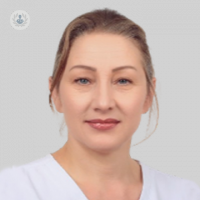An in-depth analysis of sports massage: part 2
Autore:In the second article of a two-part series, renowned osteopath Ms Anastasia Borisova discusses the impact sports massage on athletic performance, the best types of sports massage available and what precautions you must take before considering the treatment.

What is the impact of sports massage on athletic performance?
The impact of sports massage on athletic performance is significant. Athletes often experience the following performance-enhancing effects:
Optimised physical condition: regular sports massage helps athletes maintain their bodies in peak physical condition. It addresses muscle imbalances, tightness, and restrictions, allowing athletes to perform at their best.
Reduced risk of injuries: by identifying and addressing potential issues, sports massage can reduce the risk of injuries during training and competition. This is especially crucial for athletes who engage in high-impact or contact sports.
Improved post-event recovery: after a competition or intense training session, athletes require efficient recovery. Sports massage accelerates the recovery process, reducing post-event soreness and helping athletes bounce back quickly.
Enhanced mental state: athletes often report feeling more relaxed, focused, and mentally prepared for their activities after a sports massage. Mental well-being is a critical component of athletic performance.
What are the best types of sports massage for athletes?
The choice of the most suitable type of sports massage for athletes often depends on their specific needs and preferences. Common massage techniques used in sports massage include:
Swedish massage: this technique uses long, flowing strokes to promote relaxation and reduce muscle tension.
Deep tissue massage: deep tissue massage involves firmer pressure to target muscle knots and deeper layers of muscle tissue. It is effective for releasing chronic muscle tension.
Myofascial release: myofascial release focuses on the fascia, a connective tissue that surrounds muscles and other structures. It can help improve flexibility and reduce restrictions in the fascia.
Trigger point therapy: trigger point therapy targets specific points in muscles that are sensitive or painful when pressure is applied. It can alleviate pain and muscle tension.
A qualified sports massage therapist may use a combination of these techniques, tailoring the massage to the individual athlete's needs and goals. Communication between the athlete and the therapist is essential to ensure the massage is effective and comfortable.
What happens during a typical sports massage session?
A typical sports massage session for athletes includes the following components:
Assessment: the session begins with an assessment of the athlete's condition, goals, and any specific problem areas or injuries.
Discussion: the therapist and athlete may discuss any concerns, preferences, or areas of focus.
Massage techniques: the therapist applies various massage techniques to target specific muscles or areas of the body, addressing muscle tension and discomfort
effectively.
Stretching and mobilisation: to enhance flexibility and range of motion, the therapist may incorporate stretching and joint mobilization exercises. These can be customised
to the athlete's unique needs.
Recommendations: after the session, the therapist often provides recommendations for self-care. These may include specific stretching exercises or practices to maintain and maximise the benefits of the massage.
Post-sports massage recommendations:
After a sports massage, athletes are advised to follow specific recommendations to optimise the benefits and ensure their safety:
Stay hydrated: adequate hydration is crucial. It helps flush out toxins from the body, especially after a massage that may have released some tension and waste products.
Rest: allow your body sufficient time to recover and heal. Quality sleep plays a vital role in promoting healing, reducing pain, enhancing muscle recovery, and supporting mental well-being.
Avoid intense physical activity: for a day or two after a sports massage, it's generally best to avoid intense physical activity. This period of rest allows your body to recover without overexertion.
Stretch and exercise: The therapist may recommend specific stretching or exercises to be performed post-massage. These exercises help maintain and enhance the benefits of the massage, keeping muscles supple and promoting flexibility.
Communication: you should always listen to your body and communicate any unusual sensations or discomfort experienced after the massage with the therapist. Open and honest
communication ensures that the therapist can adjust future sessions to better suit your
needs.
Contraindications and precautions
It is essential to be mindful of both contraindications and precautions when considering sports massage. Contraindications are strict circumstances where sports massage should not be administered, such as active infections, fever, open wounds, recent surgery, severe cardiovascular conditions, and severe hypertension.
On the other hand, precautions denote conditions or situations where sports massage can proceed but require careful consideration and possible modifications to ensure safety. These include skin conditions, joint inflammation, a history of cancer, pregnancy, certain medical conditions, and allergies.
Understanding and respecting these guidelines is fundamental for a safe and effective sports massage experience, emphasising the importance of open communication with your therapist regarding your health concerns or conditions.
If you would like to book a consultation with Ms Borisova, you can do so by visiting her Top Doctors profile today



